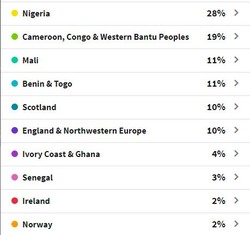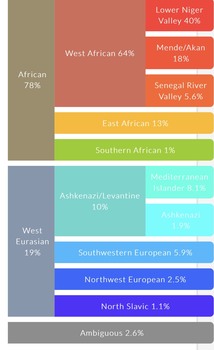It's really there because of all the Muslim slaves from West Africa who were taken by force to the United States for three centuries, from the 1600s to the mid-1800s. Upward of 30 percent of the African slaves in the United States were Muslim, and an untold number of them spoke and wrote Arabic, historians say now. Despite being pressured by slave owners to adopt Christianity and give up their old ways, many of these slaves continued to practice their religion and customs, or otherwise melded traditions from Africa into their new environment in the antebellum South. Forced to do menial, back-breaking work on plantations, for example, they still managed, throughout their days, to voice a belief in the God of the Quran. These slaves' practices eventually evolved -- decades and decades later, parallel with different singing traditions from Africa -- into the shouts and hollers that begat blues music, historians believe.
Another way that Muslim slaves had an indirect influence on blues music: the instruments they played. Drumming (which was common among slaves from the Congo and other non-Muslim regions of Africa) was banned by white slave owners, who felt threatened by its ability to let slaves communicate with each other and by the way it inspired large gatherings of slaves.
Stringed instruments (which were favored by slaves from Muslim regions of Africa, where there's a long tradition of musical storytelling) were generally allowed because slave owners considered them akin to European instruments like the violin.
So slaves who managed to cobble together a banjo or other instrument (the American banjo originated with African slaves) could play more widely in public. This solo- oriented slave music featured elements of an Arabic-Islamic song style that had been imprinted by centuries of Islam's presence in West Africa, says
Gerhard Kubik, an ethnomusicology professor at the
University of Mainzin Germany who has written the most comprehensive book on Africa's connection to blues music ("Africa and the Blues").









